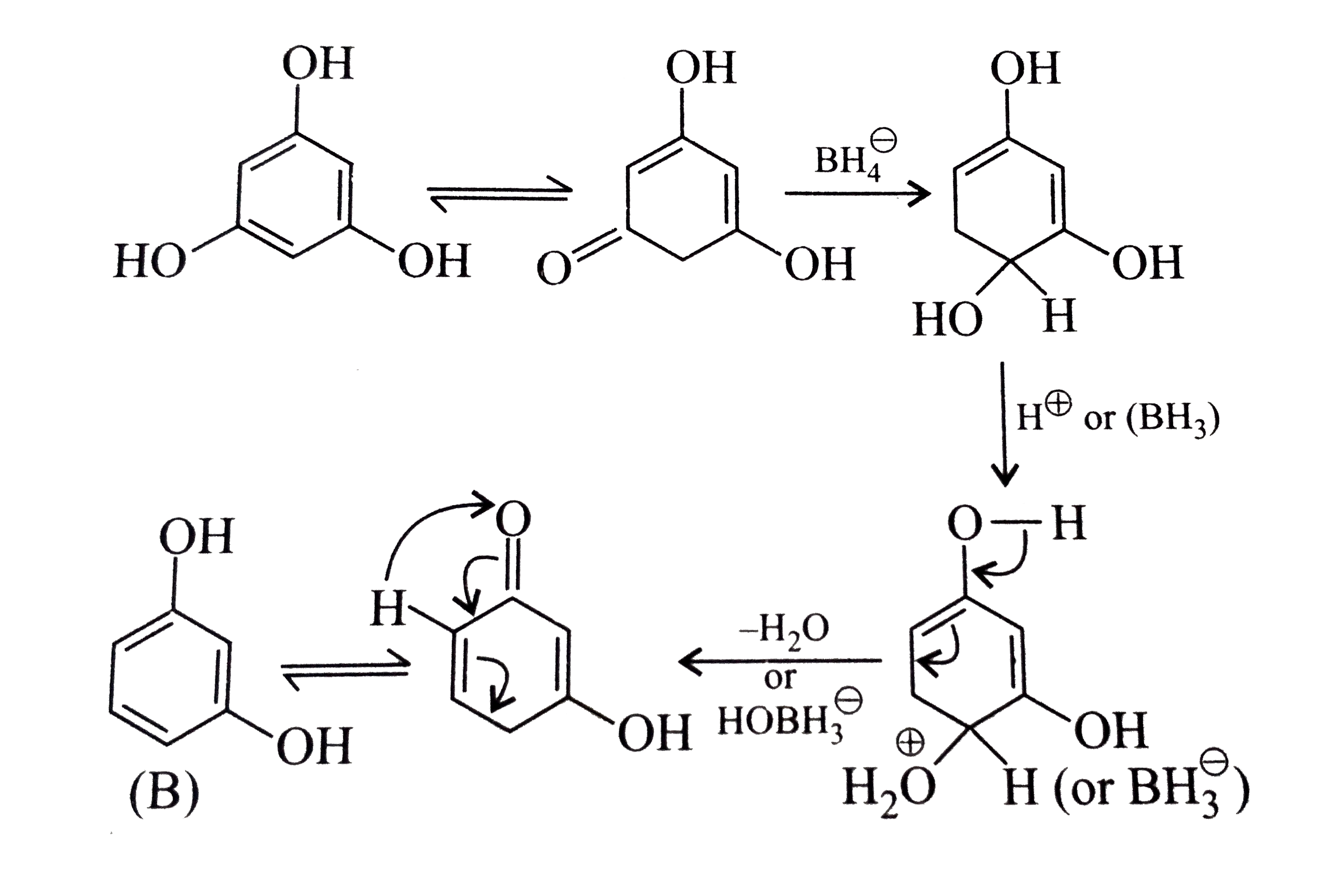Phenols are generally charged with NaBH4/H3O⊕ 1,3- and 1,4-benzenediols and 1,3,5-benzenetriols are unchanged under these conditions. However, 1,3,5-benzenetriol (phloroglucinol) gives a high yield of product (B).
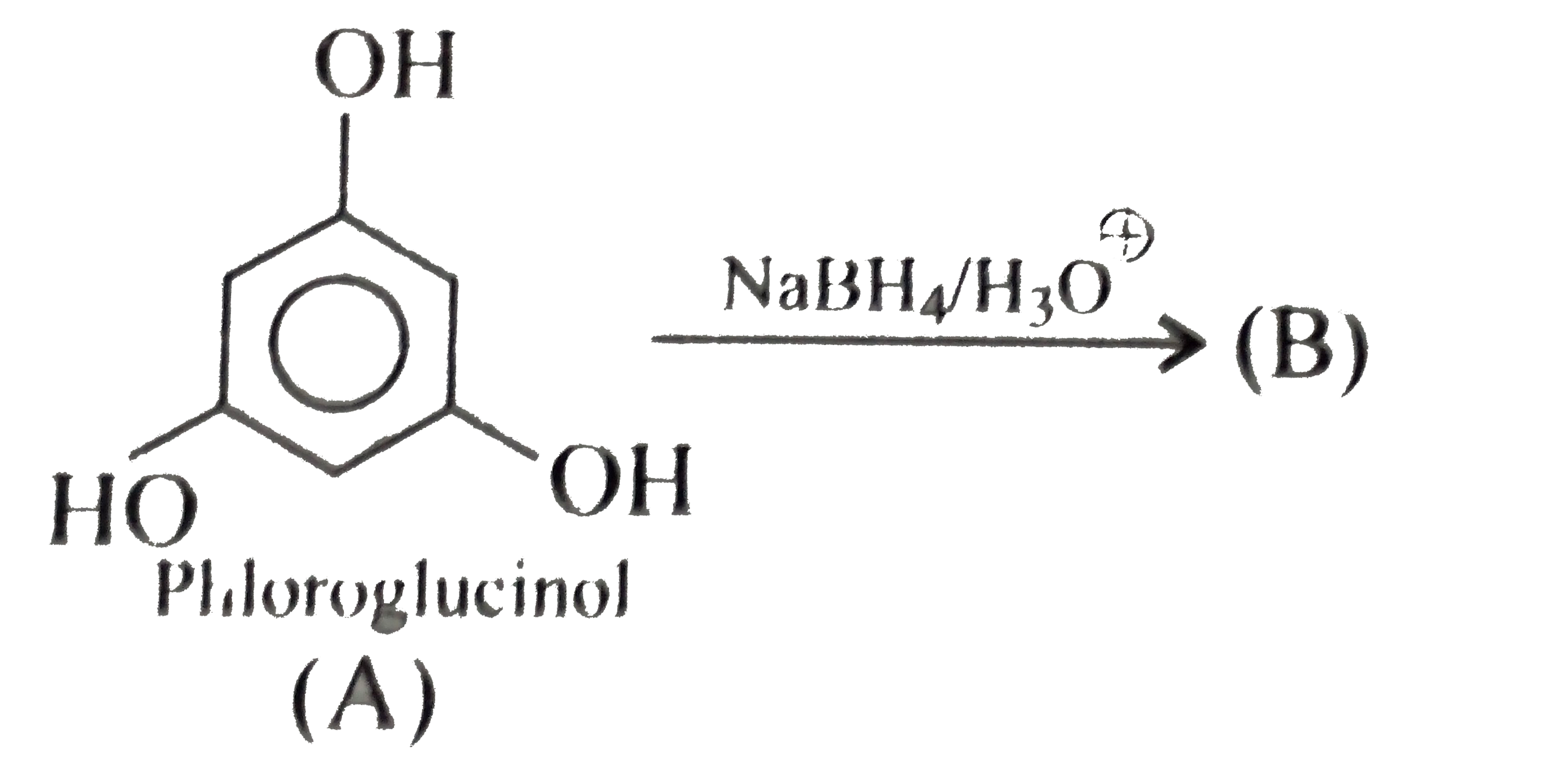
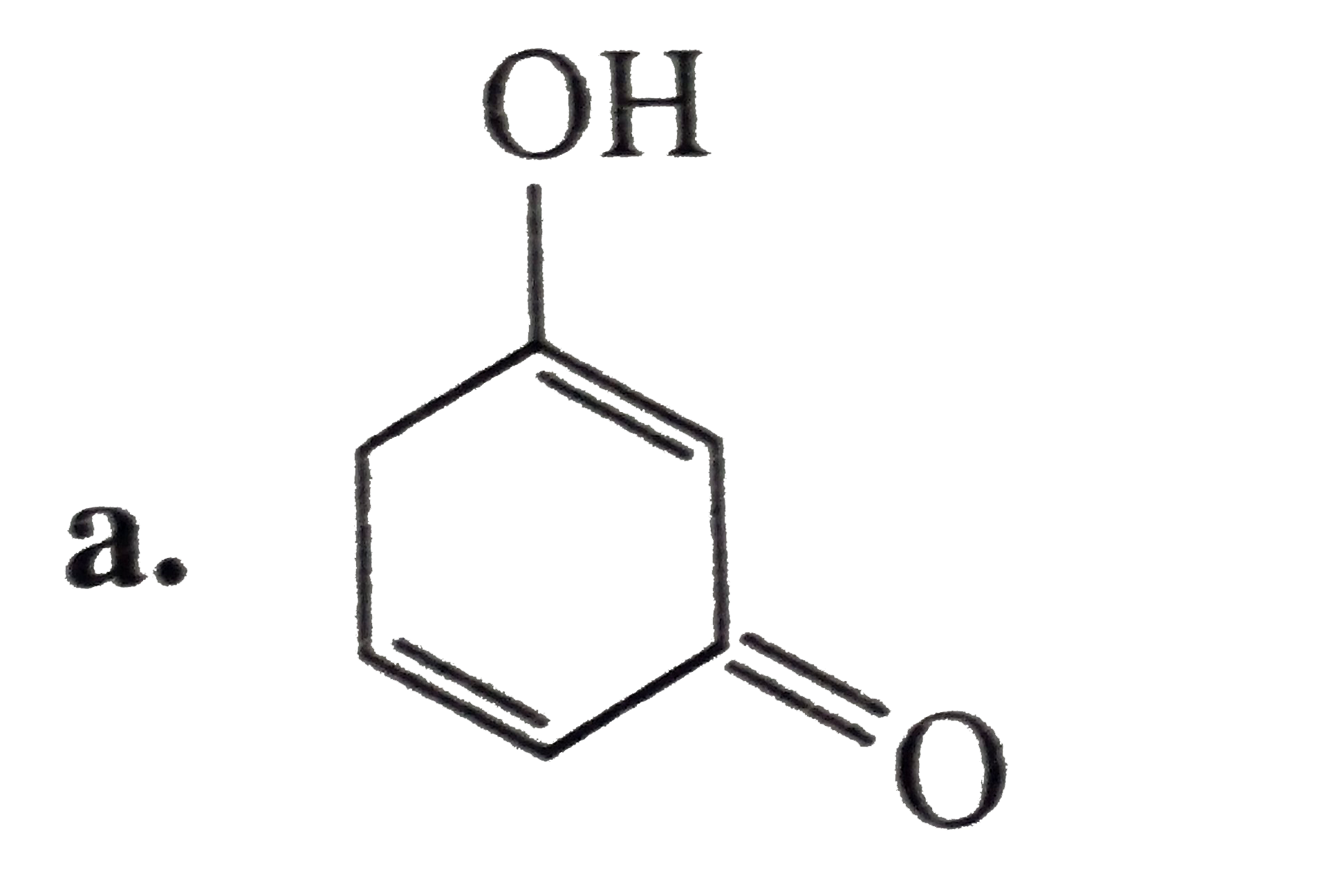
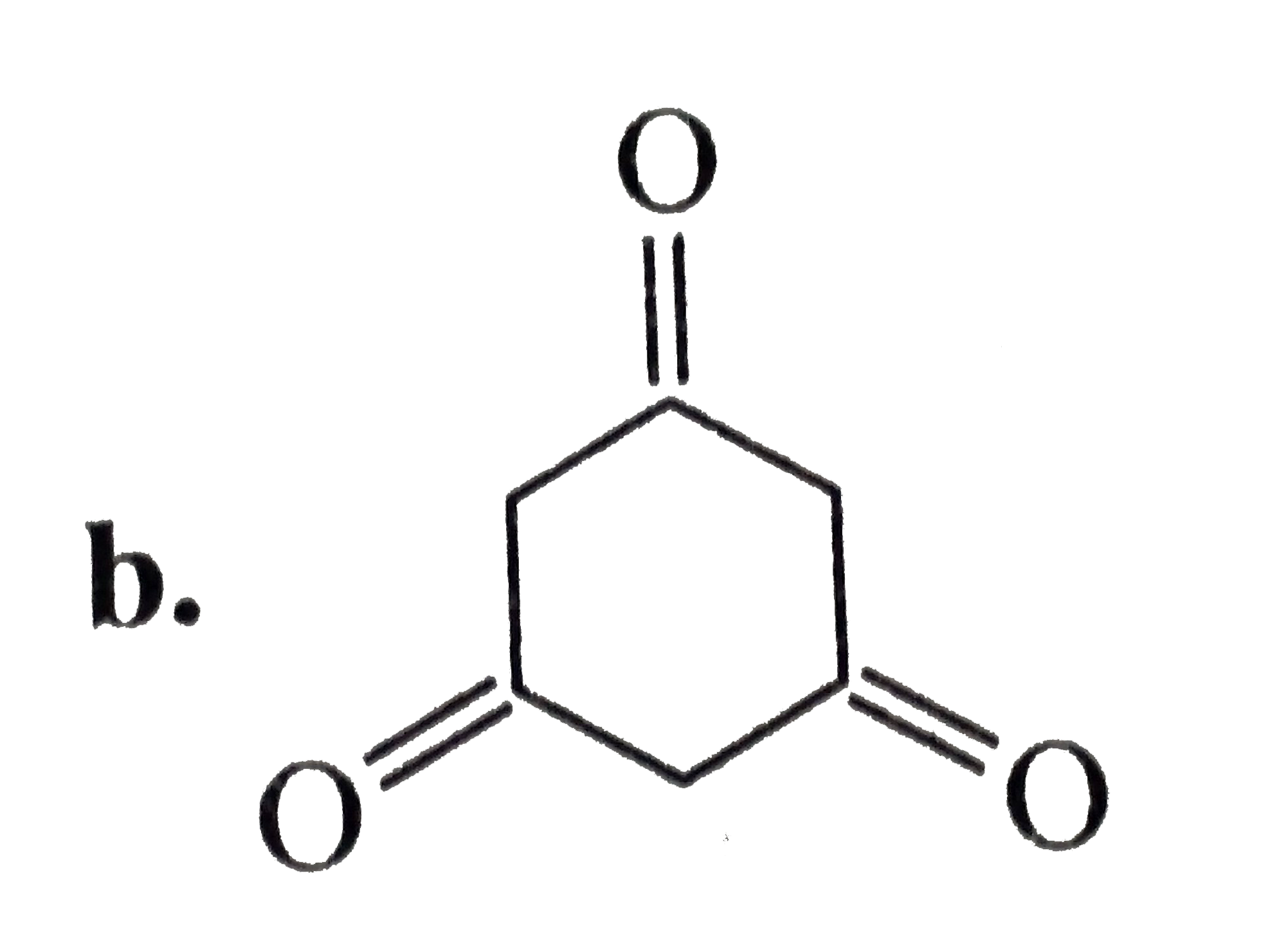
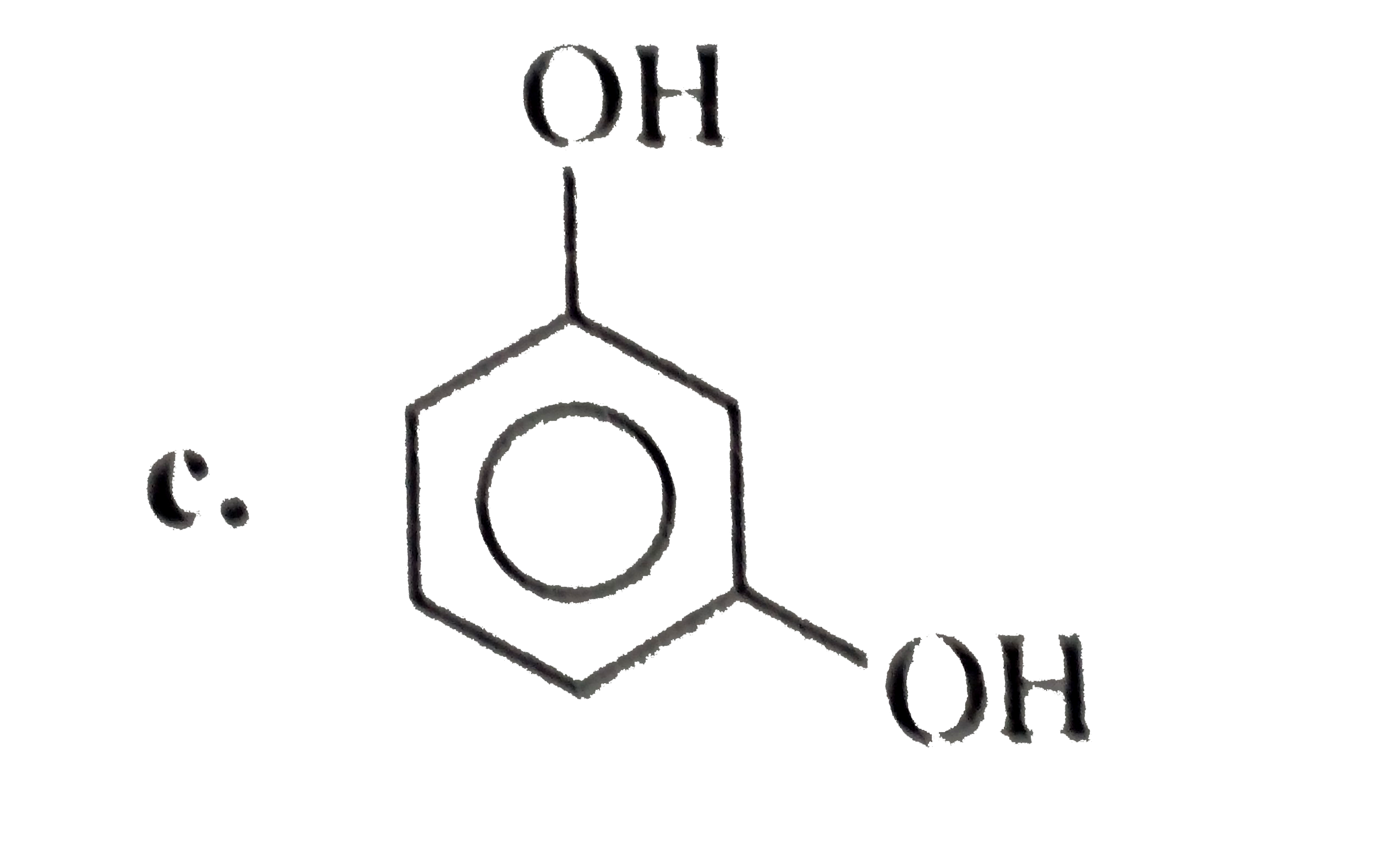
Both (a) and (b)
The correct Answer is:C
Topper's Solved these Questions
- ALCOHOL,PHENOL AND ETHERSBOOK - CENGAGE CHEMISTRY ENGLISHCHAPTER - ALCOHOL,PHENOL AND ETHERSEXERCISE - Exercises Single Correct
72 Videos
- ALCOHOL,PHENOL AND ETHERSBOOK - CENGAGE CHEMISTRY ENGLISHCHAPTER - ALCOHOL,PHENOL AND ETHERSEXERCISE - Exercises Assertion-Reasoning
5 Videos
- ALCOHOL,PHENOL AND ETHERSBOOK - CENGAGE CHEMISTRY ENGLISHCHAPTER - ALCOHOL,PHENOL AND ETHERSEXERCISE - Exercises Linked Comprehension
60 Videos
- ALIPHATIC AND AROMATIC ALDEHYDES AND KETONESBOOK - CENGAGE CHEMISTRY ENGLISHCHAPTER - ALIPHATIC AND AROMATIC ALDEHYDES AND KETONESEXERCISE - Archives Subjective
26 Videos
Similar Questions
If 3− hexanone is reacted with NaBH4 followed by hydrolysis with D2O , the product will be :
View SolutionIn the reaction, 4NH3(g)+5O2(g)→4NO(g)+6H2O(g), when 1 mole of ammonia and 1 mole of O2 are made to react to completion
View SolutionGive the structure of the major organic products obtained from 3−ethyl−2−pentene under each of the following reaction conditions.
a. HBr in the presence of peroxide
b. Br2/H2O
c. Hg(Oac)2/H2O,NaBH4
View SolutionLet A={1,2,3,4,5} and B={-2,-1,0,1,2,3,4,5}.
Non-decreasing functions from A to B is
View SolutionIf A=[123456]andB=⎡⎢⎣142536⎤⎥⎦, then the determinant value of BA is
View SolutionIf A={1,3,5,7,9}andB={1,2,3,4,5} then find A∪BandA∩B.
View SolutionNaBH4←−−−−PhCH=CH−CHO1.LAH,ether−−−−−−−−−−→2.H3O+(A)
The products (A) and (B) are:
View SolutionNaBH4←−−−−PhCH=CH−CHO1.LAH,ether−−−−−−−−−−→2.H3O+(A)
The products (A) and (B) are:
View SolutionIn the acid hydrolyiss reaction A+H2O+H⊕→ Product, where [H⊕]=0.1moldm−3 and H2O is present in large excess, the apparent rate constant is 1.5×10−5s−1. Calculate the true rate constant.
View SolutionP4O6 reacts with water according to equation P4O6→4H3PO3.
Calculate the volume of 0.1MNaOH solution required to neutralise the acid formed by dissolving 1.1g of P4O6 in H2O.
View Solution

